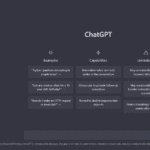IBM Watson Assistant is a cognitive assistant that helps you manage everyday tasks such as scheduling appointments, ordering food, and paying bills. It does this by understanding natural language and providing personalized recommendations. You can think of it as your personal assistant working 24/7 to make your life easier. What sets IBM Watson apart from other digital assistants is its ability to handle more complex requests and provide more accurate results. For example, you can ask Watson for help finding a new job or planning a vacation. With Watson by your side, you’ll be able to get more done with less stress.
What is IBM Watson Assistant and what does it do?
IBM Watson Assistant is an artificial intelligence system that can help businesses automate customer service tasks and interact more efficiently with customers. Leveraging natural language processing capabilities, Watson allows people to interact with bots in their own language, helping to make their interaction more intuitive. With features like entity extraction, sentiment analysis, and dialog flow configuration, the solution makes it easy for companies to create customer service chatbots quickly. Not only does it reduce costs associated with customer support, but it also provides personalized experiences for customers. This can potentially result in increased customer trust and loyalty towards businesses using the Watson Assistant platform.
How can IBM Watson Assistant be used in businesses
IBM Watson Assistant can potentially revolutionize many aspects of business and organizational management. By leveraging natural language processing, businesses can use this technology to understand customer needs better and provide a personalized experience that prioritizes efficiency. It makes it easier to manage vast amounts of data in an organized manner, creating smoother processes when managing teams or projects across multiple loc ations. Leveraging IBM Watson Assistant also gives businesses insights into how their services are used, enabling them to adapt quickly to changing market conditions and deliver agile solutions for their customers. With Watson’s assisted conversation management, employees can respond quicker and more accurately to customer inquiries without wasting precious time searching for information.
benefits of using IBM Watson Assistant over similar tools or technologies
With features like natural language understanding, deployment in Voice Assistants, and cloud-based scalability, this tool is incredibly well-suited for businesses looking to better their customer service operations. IBM Watson Assistant’s many customizable options stand out from similar technologies; its integrated machine-learning capabilities make creating a personalized conversational agent more efficient than ever. Additionally, IBM Watson Assistant offers market-leading security and compliance support to ensure that users have peace of mind when deploying their AI agents on multiple platforms around the world. Finally, as an all-inclusive platform, IBM Watson Assistant is ideal for businesses benefiting from unique applications such as virtual assistants and customer service bots.
How to use IBM Watson Assistant, and what kind of training or support is available for users?
IBM Watson Assistant has been designed with ease of use in mind. Intuitive menus let you develop a range of conversations quickly and easily, so you can have your chatbot up and running in no time. IBM provides detailed documentation and tutorials that allow you to make the most out of the product. If more is needed, an active online community offers plenty of advice on best practices. For those customers requiring more comprehensive support, paid services are available via IBM’s development partners to assist in customizing solutions and providing ongoing technical support. All in all, IBM Watson Assistant makes it easy to develop conversational experiences with minimal effort while also being on hand should additional assistance be required.
Though the platform is designed to save time by automating mundane customer service tasks, it can come with certain limitations that customers should be aware of before implementing it in their businesses. Among these drawbacks is voice recognition accuracy, which could lead to misunderstandings depending on how users set up the system and adjust its responses. Other disadvantages include limited intents and customization options and a lack of integrated reporting or tracking features.
How to Use IBM Watson Assistant for Customer Care
IBM Watson Assistant is a powerful platform that can be used to create conversational interfaces for a variety of use cases, including customer support. Here are some general steps to follow when using IBM Watson Assistant for customer support:

- Identify the most common customer inquiries: Analyze your customer support data to identify the most common inquiries that your customers have. These may include questions about products or services, billing, shipping, or returns.
- Create a new workspace: In Watson Assistant, create a new workspace specifically for your customer support chatbot. Define the intents and entities that your chatbot will use based on the common inquiries you identified in step 1.
- Define the dialog flow: Use the Watson Assistant tooling to define the conversational flow of your chatbot. This includes creating dialog nodes, defining conditions for when to trigger those nodes, and adding responses for your chatbot to give.
- Train the chatbot: Once you have defined your dialog flow, you can train your chatbot by providing it with sample conversations. This will help the chatbot learn how to respond to customer inquiries.
- Connect your chatbot to your customer support system: IBM Watson Assistant can be integrated with a variety of customer support systems, including LiveChat, Zendesk, Salesforce, and ServiceNow. Connect your chatbot to your customer support system so that it can access customer data and provide personalized support.
- Test your chatbot: Use the testing tools in Watson Assistant to ensure that your chatbot is functioning correctly. You can test the chatbot by simulating a conversation with it and checking that it responds correctly.
- Deploy it: Once you are satisfied with your chatbot, deploy it to your chosen customer support channel. This may include your website, mobile app, or messaging platforms like Facebook Messenger or WhatsApp.
Using IBM Watson Assistant for customer support requires a combination of technical expertise and knowledge of your business use case. It’s important to carefully define the intents and entities that your chatbot will use, create a logical dialog flow, and thoroughly test your chatbot to ensure that it functions correctly and provides helpful support to your customers.
How to Train Your Bot
To train IBM Watson Assistant, you will need to provide it with sample conversations that it can use to learn how to respond to user inputs. Here are the steps to follow when training IBM Watson Assistant:
- Collect sample conversations: Gather a set of sample conversations that represent the types of interactions that users may have with your chatbot. These conversations should cover a range of topics and scenarios.
- Define intents and entities: In IBM Watson Assistant, define the intents and entities that your chatbot will use to understand user inputs. Intents represent the user’s intention or goal in the conversation, while entities represent specific pieces of information that the chatbot needs to extract from the user’s input.
- Create dialog nodes: Using the Watson Assistant tooling, create dialog nodes that represent the different steps in the conversation flow. Define the conditions that trigger each node and the responses that your chatbot should give.
- Train the chatbot: In Watson Assistant, use the sample conversations that you collected to train the chatbot. You can do this by uploading a CSV or JSON file that contains the conversation data, or by manually entering the conversation data into the tooling.
- Review and refine: Once you have trained the chatbot, review its responses and refine the dialog flow as needed. You can do this by using the testing tools in Watson Assistant to simulate conversations with the chatbot and check that it is responding correctly.
- Continue to iterate: As your chatbot interacts with users in the real world, continue to collect data and use it to refine the chatbot’s responses and dialog flow. This will help the chatbot improve over time and provide more accurate and helpful responses to users.
All things considered, IBM Watson Assistant is a potent and versatile tool. It provides businesses and organizations with valuable insights and accurate data while improving user experience. With so many capabilities and features, it’s no wonder many companies have already adopted this technology into their day-to-day operations. IBM Watson Assistant is an excellent choice for businesses of any size looking to boost their efficiency and accuracy.











